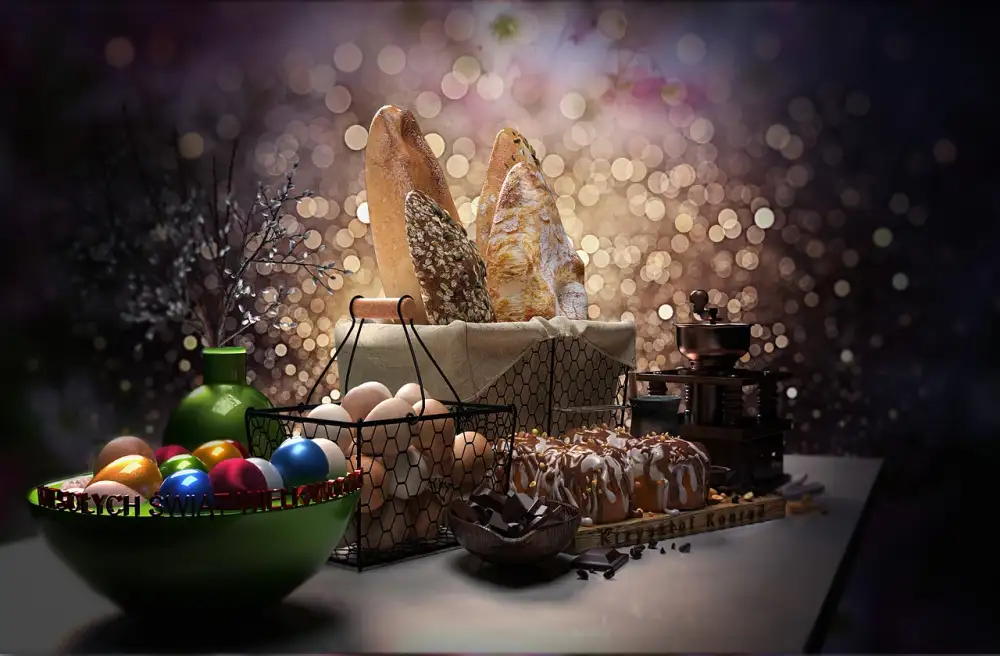Delightful Easter Bread Recipe to Elevate Your Holiday Celebrations at Home

Easter bread, also known as Paschal bread or sweet bread, is a traditional delicacy enjoyed during the Easter season in many cultures around the world. This special bread holds great significance as it symbolizes rebirth, renewal, and the end of Lenten fasting. Its rich history dates back centuries and is deeply rooted in religious and cultural traditions. Easter bread is not only a delicious treat but also a symbol of hope and joy, making it a central part of Easter celebrations in various countries.
History and Significance of Easter Bread
Easter bread, also known as "Pascha" or "Pane di Pasqua," has a rich history dating back centuries. It is a traditional bread enjoyed by many cultures around the world during the Easter holiday season. The significance of Easter bread lies in its symbolism of renewal and rebirth, mirroring the themes of Easter itself. The round shape of the bread often represents the cyclical nature of life, while ingredients like eggs symbolize new life and resurrection. In some cultures, the bread may be braided to represent unity and togetherness within families and communities during this special time of year.
Ingredients Required for Easter Bread
To make a delicious Easter bread, you will need the following ingredients: 4 cups of all-purpose flour, 1/2 cup of sugar, 1 packet of active dry yeast, 1/2 cup of warm milk, 1/2 cup of unsalted butter (softened), 3 eggs, 1 teaspoon of vanilla extract, 1/2 teaspoon of salt, 1/2 cup of raisins or candied fruit (optional), and colored sprinkles for decoration. These simple yet essential ingredients come together to create a sweet and festive bread perfect for Easter celebrations.
Step-by-Step Instructions for Making Easter Bread
1. In a mixing bowl, combine warm milk, sugar, and yeast. Let it sit for 5-10 minutes until frothy.
2. Add in melted butter, eggs, vanilla extract, and salt. Mix well.
3. Slowly incorporate flour into the mixture until a dough forms.
4. Knead the dough on a floured surface for about 8-10 minutes until smooth and elastic.
5. Place the dough in a greased bowl, cover with a damp cloth, and let it rise in a warm place for 1-2 hours.
6. Punch down the risen dough and divide it into three equal parts to braid.
7. Braid the dough strands together and form a ring shape on a baking sheet lined with parchment paper.
8. Let the bread rise again for another hour until doubled in size.
9. Preheat the oven to 350°F (180°C) and brush the bread with an egg wash before baking for 25-30 minutes or until golden brown.
10. Allow the Easter bread to cool before serving.
Enjoy your freshly baked Easter bread with loved ones!
Tips and Tricks for Perfecting Your Easter Bread
1. Use fresh ingredients: Ensure your yeast is not expired, and your flour is fresh to achieve the best results.
2. Knead the dough properly: Kneading helps develop gluten, giving the bread structure and texture.
3. Allow proper rising time: Let the dough rise in a warm, draft-free place until it doubles in size for a light and fluffy bread.
4. Brush with egg wash before baking: This gives the bread a beautiful golden crust.
5. Add a touch of sweetness: Incorporate ingredients like honey or sugar for a slightly sweet flavor profile.
6. Experiment with toppings: Try sprinkling sesame seeds, almonds, or colored sprinkles on top before baking for added visual appeal.
7. Don't rush the process: Patience is key when making Easter bread; allow each step to take its time for the best outcome.
Serving Suggestions and Pairings for Easter Bread
When serving Easter bread, consider pairing it with a variety of accompaniments to enhance the flavors and create a memorable dining experience. Traditional pairings include honey butter, fruit preserves, or even a simple drizzle of olive oil. For a savory twist, serve slices of Easter bread alongside cured meats and cheeses. To elevate your brunch spread, offer spreads like cream cheese or flavored butters. Don't forget to complement the sweetness of the bread with a cup of hot tea or coffee, or even a glass of sparkling wine for a festive touch. Experiment with different combinations to find your favorite pairing that will delight your taste buds during this special holiday celebration at home.
Variations and Regional Adaptations of Easter Bread
Easter bread comes in a variety of forms across different cultures. In Italy, "Pane di Pasqua" is a sweet bread flavored with citrus zest and often studded with colorful eggs. Greek "Tsoureki" is a braided bread scented with mahlab and decorated with almonds. In Russia, "Kulich" is a tall, cylindrical bread topped with icing and sprinkles. Polish "Babka Wielkanocna" is a rich, brioche-like bread filled with dried fruits and nuts. Each region adds its unique touch to this beloved holiday treat, making Easter bread a truly diverse and flavorful tradition worldwide.
Easter bread is more than just a delicious treat; it is a symbol of tradition, unity, and celebration. As families come together to bake and enjoy this special bread during the Easter season, they are not only savoring its sweet flavors but also connecting with their heritage and creating lasting memories.
Whether you follow a classic recipe or put your own twist on it, the act of making Easter bread can be a bonding experience that transcends generations. So, as you embark on your baking journey this Easter, remember to embrace the spirit of togetherness and joy that this beloved bread brings. Happy baking and happy Easter!
Published: 03. 04. 2024
Category: Home



